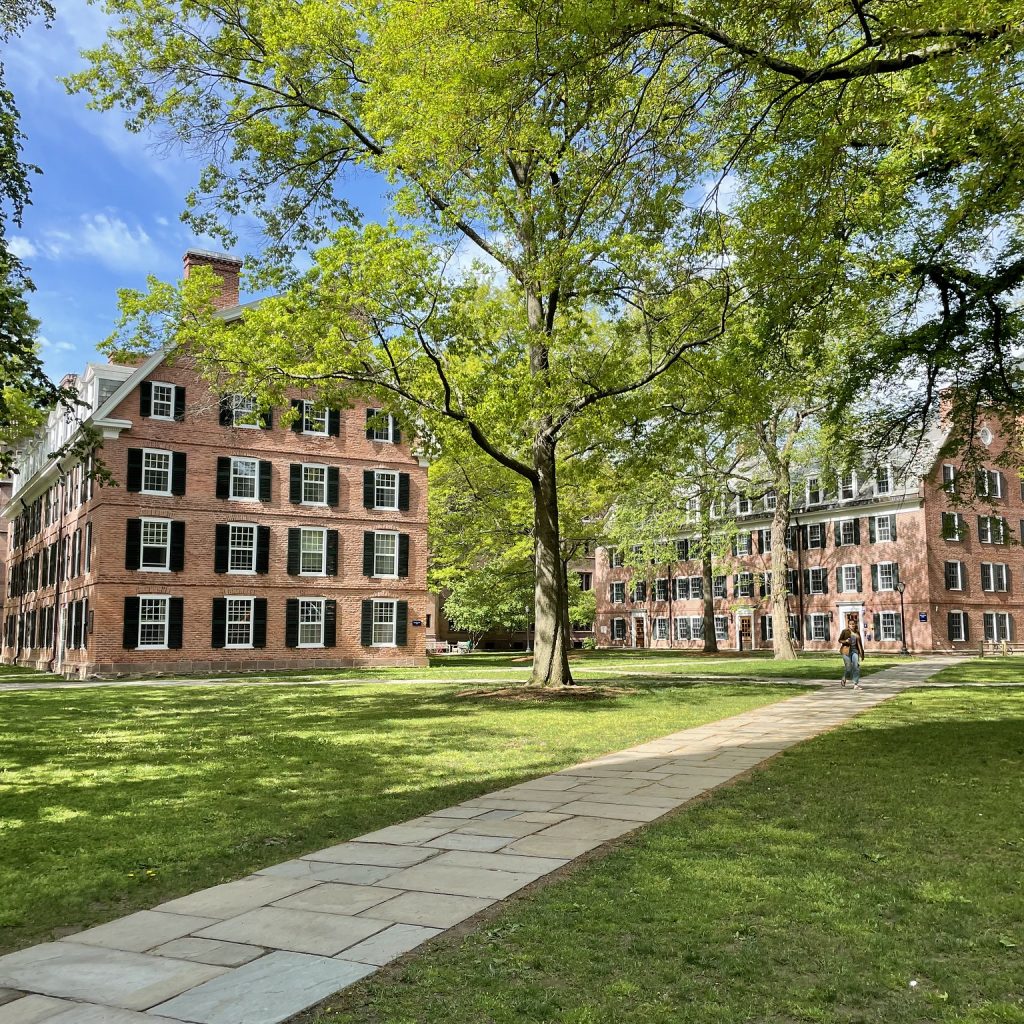Yale University
Written by Lisa Bleich and Stefanie Forman
As we walked around campus amidst gothic architecture and beautiful quads in bloom, you could feel the history of Yale oozing from the university. The campus was abuzz with students moving out and preparing for graduation. The city of New Haven, with numerous bars, restaurants and shops, seamlessly integrates with Yale as several administrative buildings line the streets just outside of campus.

Academics
Yale prides itself on small classes steeped in discussion filled with passionate students. Classes range from seminar styles with fewer than 20 students (80% of classes) to larger introductory lecture classes. Still, one can expect general chemistry and the like to have more than 100 students even though only 2% of classes are that size. All seniors need to complete a senior project that depending on the major, results in a thesis or project. Academic advising is strong, helping students navigate their distribution requirements, which comprise roughly of two classes per requirement: writing, humanities, science, quantitative reasoning, and language. The university offers a wide variety of courses and students have a lot of leeway in choosing their classes.
Our tour guide, a first-generation student from a public high school in Florida, said the History of Food was her favorite class. She is writing her senior thesis comparing energy poverty in Barcelona versus rural North Carolina. She spent a semester in Barcelona during her junior year and was fascinated by the differences and similarities of how energy poverty impacted individuals in Spain and the United States. During her first year, she found chemistry challenging since her high school had not adequately prepared her for it during Covid. Yale provided her with a private chemistry tutor, which helped her catch up to her peers. She emphasized the strong sense of community and support for first-generation students.
Social Life
All students are assigned to one of 14 residential colleges when they come in. While there is no sorting hat, she did reference the houses in Harry Potter. First-year students all live together in first-year housing, which is assigned randomly. Students choose roommates from their residential college of 400 students for subsequent years. Each college has a dean, a head of college, its own dining hall, and something unique like a basketball court, theater, or pottery studio, and most importantly, they form a strong sense of community. Groups of 10-20 students are also assigned a freshman counselor, or “Froco”, as they are affectionately called, to help freshmen acclimate to all facets of college lives. Our tour guide also loved referring to the “Buttery” in each residential college, which is exactly what it sounds like–a place to get fun late-night snacks from 10 PM – 1 AM.
When we asked our tour guide what she did for fun, she listed all her extracurricular activities. Yale students are busy, and while there are definitely opportunities for parties and socializing, it seemed like much of the social life takes place through extracurricular activities and clubs. Some of her activities included residential life leadership, the Democrats Club, and serving as the President of the Environmental Club.
When asked about the rumored competitiveness of some of the clubs, she gave a very thoughtful response.
It’s true that some clubs are very competitive, like the Bell Tower, mock trial, or the consulting clubs, however there are always different options and people self-select to their interests. Many clubs do not require auditions or applications, and if you try out and do not get in, there is always another way to participate in a similar activity or start your own club. Everyone at Yale has many interests, and they can always find a way to get involved. There are limitless opportunities.
Yale also has several traditions including building a massive snowman during the first snow and making fun of Harvard every chance they get.
Student Body
Yalies are cooperative, self-driven, competitive, resilient, passionate, ambitious, suffer from imposter syndrome (at times), diverse, intellectually curious, motivated, busy, and engaged.
Yale has almost 7,000 undergraduate students. A large percentage of incoming freshmen are from the tri-state area, California, Massachusetts, Florida, and Texas, and almost one-fourth of the students are international, representing 124 countries.
Surrounding Area
New Haven offers a diverse student body experience and has the most amount of restaurants per capita in the US, so there are a ton of options–New Haven also boasts the first cheeseburger and some of the best pizza in the world (yes, that is not hyperbole). There is a direct train line to New York City, the fastest one getting you there in 90 minutes, and it’s about 2 hours (via train and drive) to Boston.
Admissions and Financial Aid
Yale offers two options for the application process: Restrictive Early Action and Regular Decision–both non-binding. They are now back to requiring tests, but they are considered test-flexible, which means applicants can choose which scores to submit from the following four options: ACT, SAT, APs, and/or IBs.
Their overall acceptance rate is 4.5%Yale meets 100% of demonstrated financial need for all admitted students.
Summary
When we asked our tour guide to describe her peers, she said “resourceful, driven by community, energized by collaboration, and diverse in all facets of life.” Although students are serious about their studies, they are involved outside of the classroom and want to make impact in their smaller and larger communities. They take advantage of all that Yale and New Haven have to offer and love their overall college experience.
Yale University
Address: New Haven, CT 06520
Phone: (203) 432-4771

